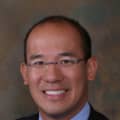Bursitis in the shoulder can have one or more causes. Of the potential causes listed below, injuries and overuse are the most common.
In This Article:
Shoulder injury or trauma
Falling or banging the shoulder on a hard surface could cause the bursa to fill with blood and the bursa’s lining to become inflamed. Even though the body reabsorbs the blood, the bursa’s lining may stay inflamed, causing bursitis symptoms. This is called traumatic bursitis.
Repetitive pressure on the shoulder
Bursitis if often caused by frequent “mini-traumas,” which can cause the same problems as a single, more serious trauma. People who must lift their arms overhead for work or sports are more prone to developing shoulder bursitis over time. People at a higher risk of developing shoulder bursitis include painters, wallpaper hangers, tennis players, swimmers and baseball pitchers.
Trauma or repetitive stress in the shoulder can also lead to:
Age
While people of any age can be affected, advanced age increases the chances of developing shoulder bursitis.
Poor Posture
People who hunch their shoulders decrease the space between the acromion and the glenohumeral joint, making it more likely that the soft tissue in between will become squeezed and irritated.
Bacterial infection of a bursa
An infection of the bursa is known as septic bursitis. Certain medical conditions and medications suppress people’s immune systems and make them more susceptible to septic bursitis. For example, people with cancer, HIV/AIDS, lupus, alcoholism, chronic obstructive pulmonary disease (COPD), and diabetes may be more likely to develop septic bursitis.
See Septic Bursitis
History of inflammation of the bursa
Patients who have had bursitis in the past are more likely to develop it again.
Bone spurs or calcium deposits
The shoulder’s bursae and other soft tissue can become irritated by bone spurs, also called osteophytes, that grow on the underside of the acromion. Calcium deposits—small collections of calcium that are often small and soft but can grow and harden over time—can also cause irritation.
Vaccination
Research suggests1Martín Arias LH, Sanz Fadrique R, Sáinz Gil M, Salgueiro-Vazquez ME. Risk of bursitis and other injuries and dysfunctions of the shoulder following vaccinations. Vaccine. 2017 Sep 5;35(37):4870-4876. doi: 10.1016/j.vaccine.2017.07.055. Epub 2017 Jul 31. Review. PubMed PMID: 28774564.,2Cook IF. Subdeltoid/subacromial bursitis associated with influenza vaccination. Hum Vaccin Immunother. 2014;10(3):605–606. doi:10.4161/hv.27232,3Bancsi A, Houle SKD, Grindrod KA. Getting it in the right spot: Shoulder injury related to vaccine administration (SIRVA) and other injection site events. Can Pharm J (Ott). 2018;151(5):295–299. Published 2018 Aug 17. doi:10.1177/1715163518790771 that some people experience shoulder bursitis symptoms a couple of days after a flu vaccination or other vaccination. Experts theorize that shoulder bursitis may occur because of nearby inflammation resulting from the injected material or, more likely, because the injection needle disturbed the shoulder’s bursa. (Vaccination-triggered bursitis is not common and not a good reason to avoid vaccinations.)
Knowing the cause of shoulder bursitis can help patients and doctors identify ways to treat and prevent bursitis in the future.
- 1 Martín Arias LH, Sanz Fadrique R, Sáinz Gil M, Salgueiro-Vazquez ME. Risk of bursitis and other injuries and dysfunctions of the shoulder following vaccinations. Vaccine. 2017 Sep 5;35(37):4870-4876. doi: 10.1016/j.vaccine.2017.07.055. Epub 2017 Jul 31. Review. PubMed PMID: 28774564.
- 2 Cook IF. Subdeltoid/subacromial bursitis associated with influenza vaccination. Hum Vaccin Immunother. 2014;10(3):605–606. doi:10.4161/hv.27232
- 3 Bancsi A, Houle SKD, Grindrod KA. Getting it in the right spot: Shoulder injury related to vaccine administration (SIRVA) and other injection site events. Can Pharm J (Ott). 2018;151(5):295–299. Published 2018 Aug 17. doi:10.1177/1715163518790771

